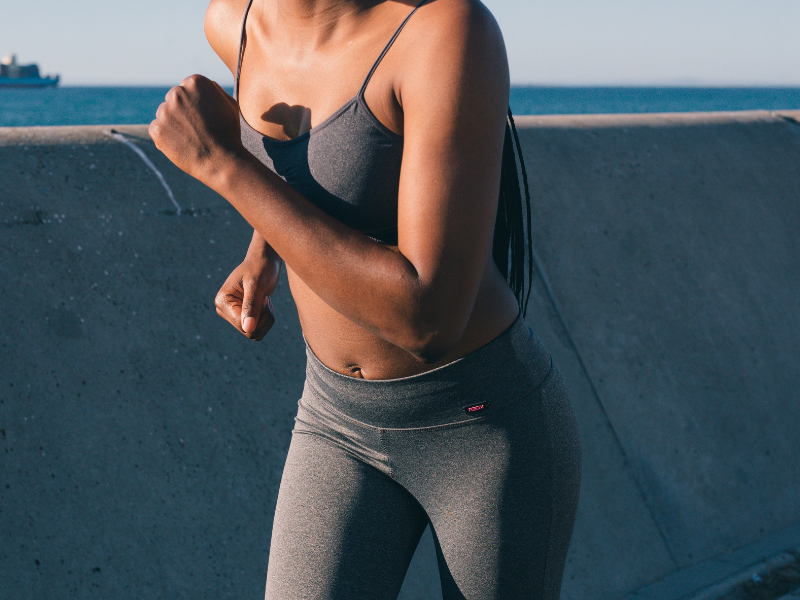Are Tencel Fabrics Good for Activewear? Why?
Today's consumer increasingly demands sustainability across every industry and vertical, even activewear. And while Tencel as a company has been innovating sustainable fibers for decades, unless you're close to the apparel industry, the company and its well-established fibers might seem like a new entrant.
Tencel Lyocell fibers are great for activewear or any activity that produces perspiration. The lyocell fibers within Tencel help control moisture and temperature during intense activities, naturally absorbing moisture, which keeps anyone wearing the fabric drier.
Beyond temperature and moisture control, activewear consumers place a high value on functional benefits - and while green activewear is better for the planet, it still needs to be able to handle the rigor of high-performance activities. Let's look at how Tencel Lyocell stacks up in that regard.
Functional Attributes That Make Tencel Lyocell Great for Activewear
In the activewear and sportswear categories, comfort, durability, temperature control, multi-way stretch, and anti-microbial properties are some of the most important factors that influence purchase decisions. All of which lend themselves to fitness-based activities.
And while the list below is certainly showcasing some of Tencel Lyocell's key features, in the eyes of activewear consumers, they are table stakes.
1. Does Tencel Lyocell Feel Comfortable?
Tencel Lyocell is extremely soft and comfortable. It's often used as a replacement fiber for cotton or silk, but can also be found in combination with polyester, wool, and others.
Many compare the feel of Tencel Lyocell to something of a hybrid between silk and cotton - where it's softer than cotton (some even say it's softer than silk) but carries some of the sensory characteristics of smoothness that you find in silk.
This varies greatly by the application, such as the type of product being made and to what end - but in general, Tencel Lyocell has a soft and smooth feel.
While softness may not necessarily be the first functional attribute of activewear, this often means Tencel Active products are less noticeable when worn - in other words, you don't notice the garments on your body as much, and it triggers your senses less during physical activities.
2. Is Tencel Lyocell a Durable Fabric?
Although Tencel Lyocell is known for its softness, it's also a notably strong fabric - meaning it is quite durable. When used on products like bed sheets, the fabric holds its shape better and shows fewer wrinkles than your typical cotton sheet.
Activewear as a category sees a lot of trips to the laundry room, and for apparel made of low-quality materials, or washed and dried without following the proper directions, it's easy to get a pair of gym shorts with a short shelf life. That's rarely the case with Tencel Active products, which are made with Tencel-branded lyocell and modal fibers.
Sure, you need to follow the proper care instructions, but the fabric is less prone to pilling and thinning of the fabric over time and washing cycles.
Additionally, because of the dying process, with Tencel Modal fibers in particular, colors will stay truer to the day you purchased - even after all the washing and drying cycles.
Bonus Points - Tencel fibers get even stronger when wet.
So yes, Tencel fibers, including lyocell and modal, are durable - holding its shape and quality longer than most activewear products on the market.
3. Is Tencel Lyocell Temperature Regulating?
Maintaining proper temperature, be it staying cool in a warm environment or vice versa, is one of the most important factors for picking the right activewear. And one of the biggest influencers on temperature is moisture.
Moisture is a common thread in this entire article, but it's worth learning more about the properties that make it so effective at regulating temperature because it impacts nearly every factor of consumer purchase decisions in active wear.
Staying dry is the main goal for a fabric to assist in temperature regulation, and Tencel fibers are uniquely able to absorb moisture, dry with incredible speed, and be woven as a breathable fabric, which is quite remarkable.
The weave can also be blended with other materials, shifting its ability to make the wearer warmer or cooler, depending on the purpose.
Do Tencel Fibers Absorb Moisture?
Tencel fibers are great at absorbing moisture or sweat, which is one of the most critical functional attributes of activewear. In fact, Tencel Lyocell absorbs moisture more efficiently than cotton, and its unique construction pulls the moisture out of your skin.
Hydrophilic fibers are to thank for this moisture-wicking technology.
Are Tencel Fabrics Breathable?
Fabrics made with Tencel Lyocell or Tencel Modal are highly breathable, in large part due to their ability to absorb moisture and dry moisture rapidly, continually allowing air to pass through. The material dries nearly three times as fast as merino wool.
So as it relates to moisture, dryness, and breathability, Tencel Active is an optimal choice for the construction of activewear
4. Are Tencel Fabrics Stretchy?
Tencel Lyocell does have stretch to it, but it's not one of the primary benefits of the fabric. However, Tencel fibers can be woven into several other fabrics including some with high elasticity, taking on some of the stretchier properties while adding the existing benefits of Tencel.
Fit is a primary functional attribute for activewear consumers, and it's based on size and customization. In large part, this comes down to a consumer being able to have the product conform to the body and still feel comfortable.
Multi-directional stretching is pivotal to activewear, and in general, apparel that can move and stretch with the body while participating in an activity.
Tencel Lyocell has a natural ability to drape well, making it a great fabric for many types of garments including yoga pants, which often need to contour to the body in different positions.
5. Does Tencel Active Have Anti-Microbial Properties?
These fibers have natural anti-microbial properties, which are closely tied to how quickly moisture dries and how tightly woven the fibers are to one another. This combination creates an undesirable area for bacteria to grow.
Tencel Lyocell's moisture-wicking abilities also help to control odors. The hydrophilic nature of the fibers helps to pull sweat away from the body, and the rapid-drying properties dry any moisture before bacteria have a chance to form and produce an odor.
This is a significant advantage over other materials, like cotton, which absorb sweat but then hold onto it, giving bacteria time to form and create an unpleasant smell.
And of Increasing Importance, Tencel Fibers Are Sustainable
On performance alone, Tencel fibers have functional attributes that are valuable to activewear, but its sustainability and sourcing practices make it truly one of a kind.
The fibers are derived from wood pulp, and the trees used are typically from sustainably managed forests. The process of creating Tencel Lyocell is also done in a closed-loop system, which means that no toxic chemicals or byproducts are released into the environment.
The result is an incredibly soft, smooth, and strong fabric that is environmentally friendly and extraordinarily functional.
So, Is Tencel Lyocell The Best Fiber For Activewear?
There's no doubt that Tencel spins some amazing fibers for activewear garments. All of the functional attributes that are critical to fitness apparel, including temperature regulation, moisture-wicking, stretch, breathability, and anti-microbial properties, show up in full effect.
But the most outstanding feature, and the feature that is now tied to the activewear zeitgeist, is that Tencel is also environmentally friendly and sustainable.
Today's activewear consumer is an increasingly eco-conscious consumer - there's no doubt about that.

